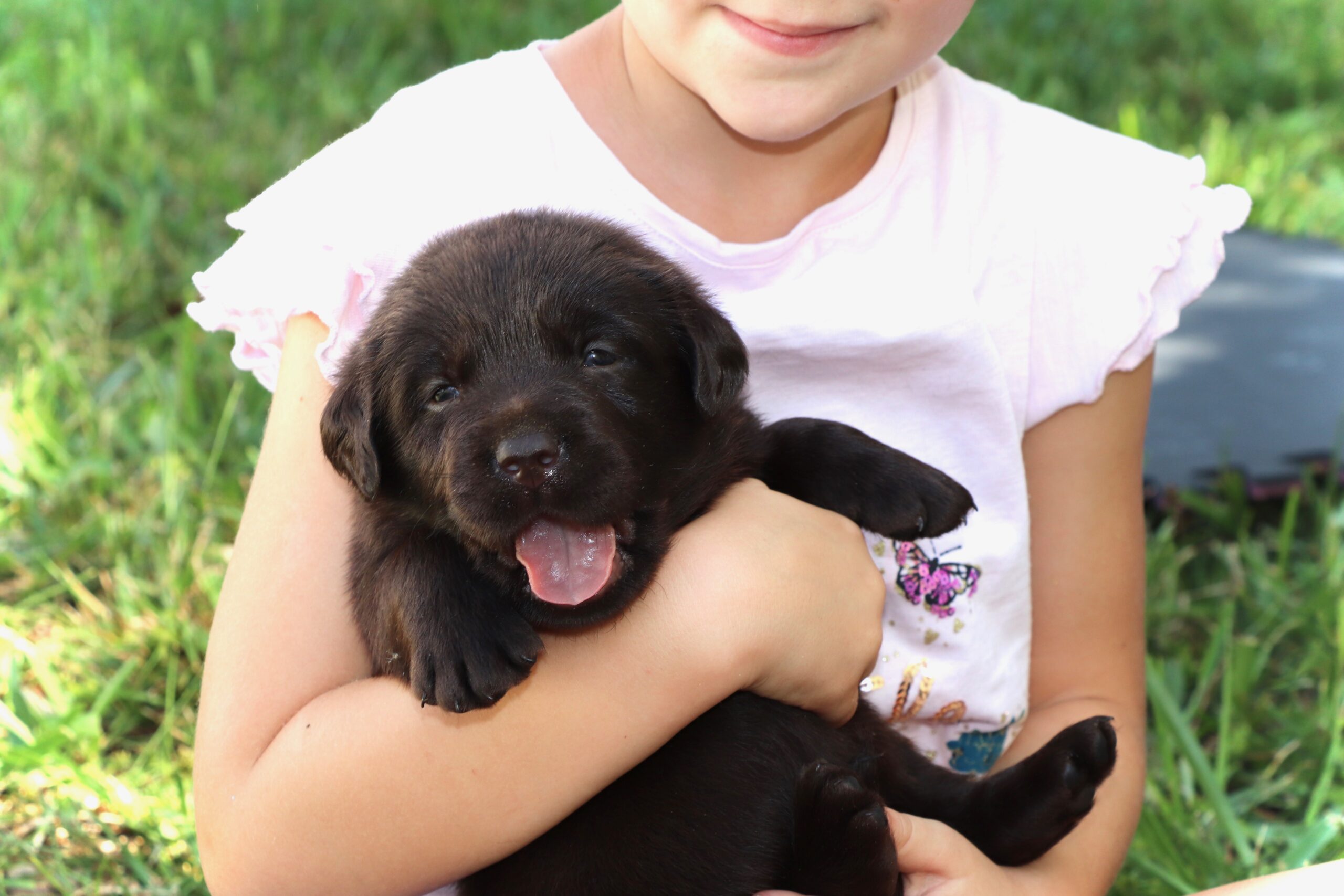Tips For New Puppy Owners:
Choosing a puppy to bring home to your family is a fascinating time. Unfortunately, in that excitement, we sometimes overlook the key elements that can make this a more successful experience for the puppy and the family dynamic.
Removing the puppy from its mother and siblings also means removing them from their set routines. The needs of the puppy are met familiarly in the previous situation. Once they arrive at their new home, they experience constant affection, the excitement of getting to cuddle in bed, and the unexpected freedom to “figure out” their new role around the house. While so many of these things sound great, they can also make the beginning stages of “puppyhood” challenging.
Here are some common reasons puppies can be overwhelming and end up developing undesired habits around the house:
1. Create a thriving puppy environment:
When expecting a baby, parents spend countless hours researching and preparing for the incoming newborn. They set up baby gates, put locks on cabinets, and babyproof the entire house. When bringing a new puppy home, people often fail to prepare the environment adequately.
We must think everything through when looking at the situation and make management plans before bringing the puppy home. Using baby gates or crates can help you keep a close eye on your puppy and create a daily routine to help with potty training.
Consider a Montessori School’s design for the children. It is an environment advantageous to learning that invites the students to explore, play, and learn in a controlled setting. Your home should be like the Montessori School for puppy education. For example, have a place where the puppy’s toys are in a box while hiding higher drive toys, such as stuffed KONGS or bully sticks, around the play area for interactive engagement.
Focus on making crate time a peaceful experience of rest by using it correctly. Do not only expose the puppy to the crate when you leave home, or it has misbehaved. You can make this space a positive experience by providing meals and having water in there. Doing this discourages a puppy from using the bathroom in the crate and having a structured routine prepared based on potty habits, feeding, and playtimes. That is an environment that is set up for the puppy to be successful.
2. Set some boundaries:
People often bring home a new puppy and give them full access to the house. But honestly, it’s essential to keep a close eye on the puppy to prevent bad habits from forming. If you find things chewed up or potty accidents in the other room, your puppy probably has too much freedom. If the puppy’s toys are continuously scattered all around the living room, the puppy won’t be able to differentiate their toy from your favorite pair of shoes.
As mentioned before, utilizing baby gates and a crate will help you set up boundaries so that you can supervise your puppy and control their environment. Do not feel guilty when using a kennel with your puppy, but think of it as a crib for nap time and a safe place for the puppy to go when you can’t monitor him. Puppies need a lot of rest, and their crate is a perfect place for that downtime.
3. Keep it Real:
It’s important to keep realistic expectations for your puppy’s behavior. Although it would be too much to expect a 12-week-old puppy to have a 5-minute “sit-stay,” Behaviors such as biting and jumping shouldn’t be excused. Don’t mistake nipping for teething, and don’t write off jumping as pure puppy excitement.
When you hold the dog accountable for behaviors early on, you will save yourself a lot of trouble once the dog is older. Too often, individuals excuse actions such as these as acceptable because “it’s a puppy; that’s what they do!” The above reference is rarely the case. Instead, it is your job to show your puppy what acceptable behaviors are. Not letting other people pet them if the puppy is mouthing and jumping all over them can go a long way! When you allow the puppy to pet while exhibiting these behaviors, all you are teaching is that those behaviors get them attention.
4. Know the true meaning of “socialization”:
People take their puppies to pet-friendly places thinking they are doing the right thing by socializing the puppy. Beware, this might not be proper socialization. Your puppy needs to be exposed to different places and meet other people. Still, the environment and strangers should not be the most exciting thing for the dog. Ideally, proper socialization is a puppy being indifferent and neutral to others around them instead of engaging and paying more attention to its handler. After all, you don’t want your puppy to love anyone more than you.
5. Provide proper motivation:
Rather than feeding your puppy meals from their food bowl, consider building a work ethic. You can start this early by placing their food into a treat pouch you can wear around your waist. By doing this, you encourage the puppy to check in and engage with you throughout the training sessions. It also allows you the ability to reward your puppy at the exact moment easily. Such as, the puppy goes potty outside, is relaxing calmly on the floor, or is obedient around the house. The more we reward and acknowledge desired behaviors, the more likely your pup is to repeat them.
Bringing home a new puppy can be overwhelming, especially when it is tempting to spoil them rotten! Focus on positive behaviors by creating an environment and routines that are conducive to training. Doing this makes a massive difference in your dog’s mannerisms as it grows up and will create a stronger bond with you. If you have trouble implementing these strategies or are concerned they are too far past the puppy stage, we are happy to help you!
I have also created a YouTube playlist with some puppy tips that can help you along your journey.



